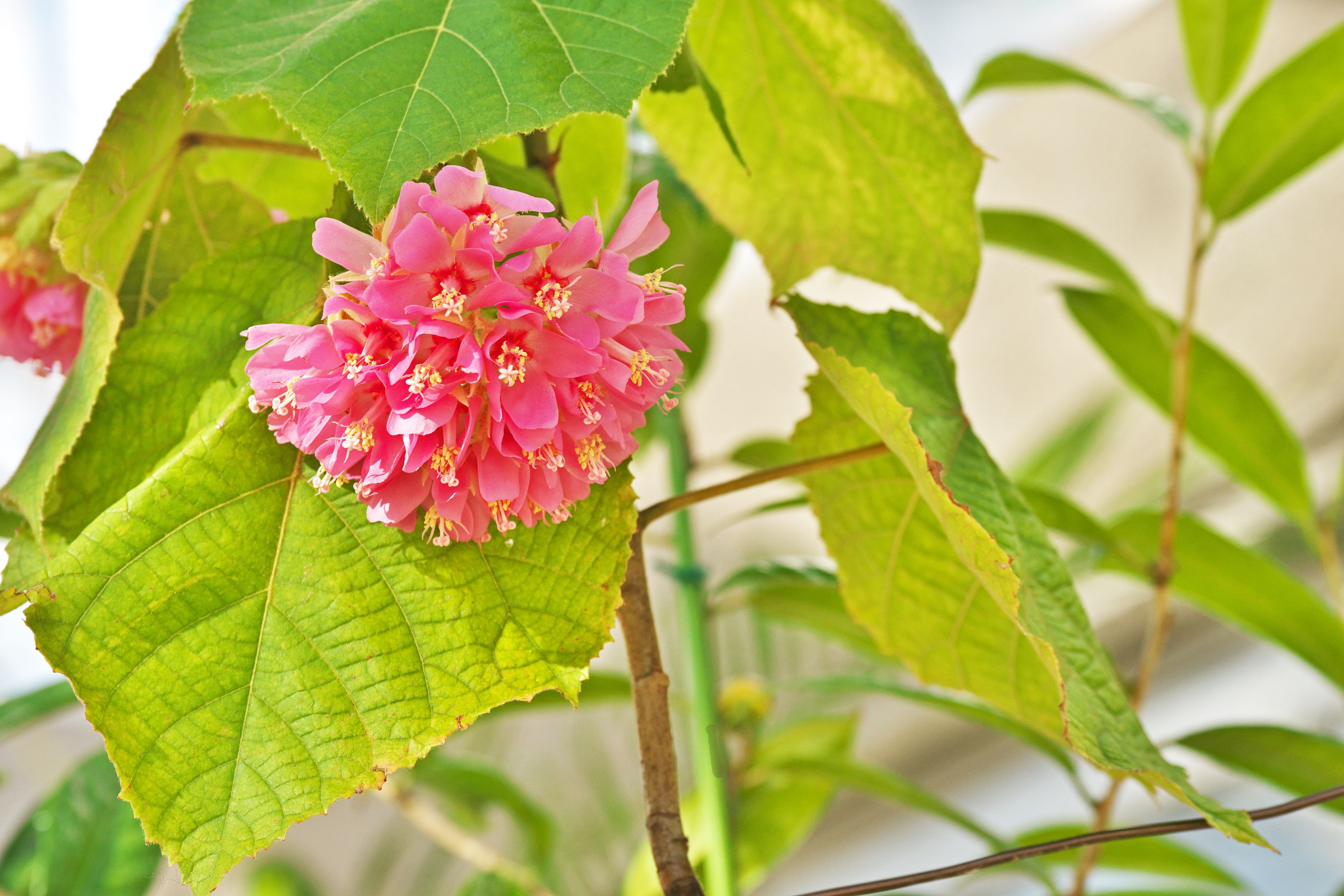Tropical hydrangea
(Dombeya wallichii)

Description
Dombeya wallichii, commonly known as the Pink Ball Tree, is a species of flowering plant in the family Malvaceae. It is native to tropical and subtropical regions of Southeast Asia, including Myanmar, Thailand, Cambodia, Vietnam, and Laos. This article will provide a comprehensive overview of Dombeya wallichii, covering its taxonomy, morphology, ecology, cultivation, and uses. Taxonomy The genus Dombeya belongs to the family Malvaceae, which is the same family as cotton, hibiscus, and okra. There are approximately 200 species in the genus Dombeya, and most are native to Madagascar and nearby islands. Dombeya wallichii was first described by George Don in 1832, and the specific epithet wallichii honors Nathaniel Wallich, a Danish botanist who worked in India during the 19th century. Morphology Dombeya wallichii is a small to medium-sized tree that typically grows to a height of 3-6 meters. The bark is grayish-brown and rough, with shallow fissures. The leaves are simple, alternate, and broadly ovate, with a length of 5-10 cm and a width of 4-8 cm. The upper surface of the leaves is dark green and glossy, while the lower surface is lighter in color and covered with fine hairs. The flowers of Dombeya wallichii are its most distinctive feature. They are borne in large, spherical clusters that can reach a diameter of 15 cm. Each flower has five petals that are fused at the base, forming a cup-shaped structure. The petals are pink or rose-colored, with a slightly darker pink or purple center. The stamens are numerous and protrude from the center of the flower. The flowers are highly attractive to bees and butterflies, which are the primary pollinators. Habitat and Range Dombeya wallichii is native to tropical and subtropical regions of Southeast Asia, including Myanmar, Thailand, Cambodia, Vietnam, and Laos. It is found in a variety of habitats, including tropical and subtropical forests, savannas, and disturbed areas. It can also be found in secondary forests, along rivers and streams, and in areas with limestone soil. It prefers well-drained soils and can tolerate a wide range of soil types, including sandy and clay soils. Dombeya wallichii is generally found at elevations up to 1,500 meters above sea level. Ecology Dombeya wallichii is found in a variety of habitats, including tropical and subtropical forests, savannas, and disturbed areas. It prefers well-drained soils and can tolerate a wide range of soil types, including sandy and clay soils. It is also tolerant of drought and can withstand periods of waterlogging. Dombeya wallichii is a deciduous tree, meaning that it sheds its leaves in response to changes in environmental conditions. In tropical regions, it typically loses its leaves during the dry season and regrows them when the rains return. During the flowering season, which typically occurs from January to April, the tree is covered in large, pinkish-white blooms that attract a variety of pollinators. Cultivation Dombeya wallichii is a popular ornamental plant, valued for its attractive flowers and overall beauty. It is relatively easy to grow and can be propagated from seeds or cuttings. The tree prefers a sunny location and well-drained soil. It should be watered regularly during the growing season but allowed to dry out between watering. Fertilizer can be applied during the growing season to promote healthy growth and flowering. Dombeya wallichii can be pruned to maintain its shape and promote branching. It is also susceptible to a variety of pests and diseases, including scale insects and fungal infections. Regular inspection and treatment can help prevent these problems from becoming severe. Uses Dombeya wallichii is primarily used as an ornamental plant, valued for its attractive flowers and overall beauty. The flowers are used in traditional medicine to treat a variety of ailments, including fever, cough, and headache. The bark and leaves are also used in traditional medicine to treat wounds and skin infections. In addition, the tree is sometimes used for timber and fuelwood. Conservation Status The conservation status of Dombeya wallichii is currently listed as "Least Concern" by the International Union for Conservation of Nature (IUCN). This is due to the species' wide distribution and relatively stable population. However, like many other species, it may face threats from habitat loss, deforestation, and climate change in the future. Continued monitoring and conservation efforts may be necessary to ensure the long-term survival of Dombeya wallichii and other species in its ecosystem.
Taxonomic tree:







